The best beaches in Honolulu boast sparkling sands and clear waters. Many are also close enough to the central business district for locals to sneak in a surfing session before work.
Ask most people about the best beach in Honolulu and they’re likely to mention Waikīkī, named for the Hawaiian word for “sprouting fresh water.” This sprawling, sandy promenade on the southern side of Oahu is deservedly popular. While Waikīkī is very much worth a visit, there are plenty of other spots to don a bikini and flop in a sunlounger nearby.
Sandy Beach
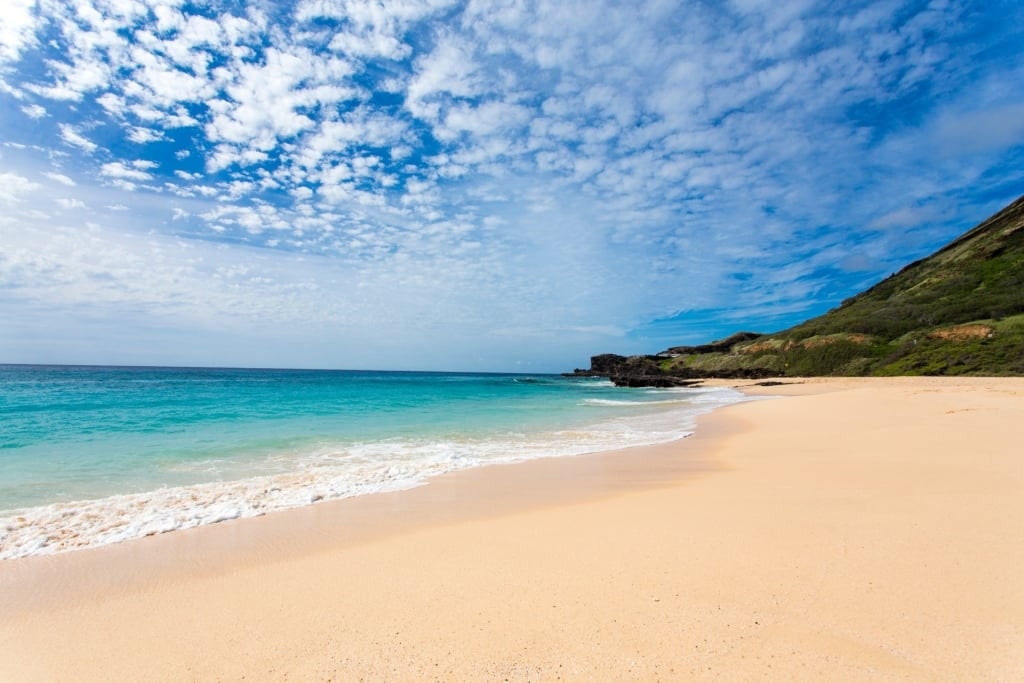
Sandy Beach
Known as Wāwāmalu in Hawaiian, Sandy Beach is one of the loveliest places on the eastern coastline of Oahu. The beach sports particularly fine, soft, honey-hued sand that’s gentle on bare feet.
The beach happens to be situated near Hanauma Bay Nature Preserve, where snorkelers and divers often venture to spy sea turtles. Sandy Beach is roughly a 20-minute drive from the city center and there are public buses available.
In contrast to Waikīkī Beach, which is known for its relatively gentle waves, Sandy’s, as it’s sometimes called, is home to mightier waves and rip currents at high surf.
This means that less confident swimmers may want to stick to walking along the shoreline. For experienced bodyboarders, however, the conditions here are nothing short of thrilling.
Makapuʻu Beach
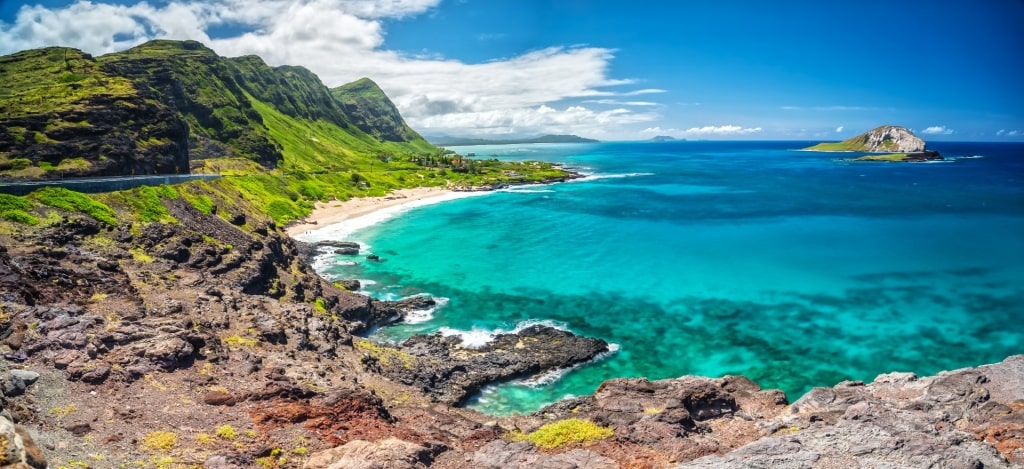
Makapuʻu Beach
It doesn’t get much more picturesque than this expansive beach park. Dramatic sea cliffs rise up in the backdrop over golden sands.
Nearby Makapuʻu Point is one of the most famous spots on Oahu for bodysurfing. While these waves may be too powerful for amateurs, it’s a fantastic place to watch the pros really show off their skills.
As lovely as it is to dip your toes in the water here, arguably this beach is even better when admired from above. Trek up Makapuʻu Trail for a spectacular view of the azure waters crashing against the shoreline, as well as one of the most famous lighthouses in the world.
Makapuʻu Beach is not as heavily developed as some of Honolulu’s other beaches, but it still has all of the necessary facilities to lounge around for an afternoon. Well-maintained restrooms, showers, and picnic tables, plus an on-duty lifeguard, make this a great family-friendly spot.
Halona Beach Cove
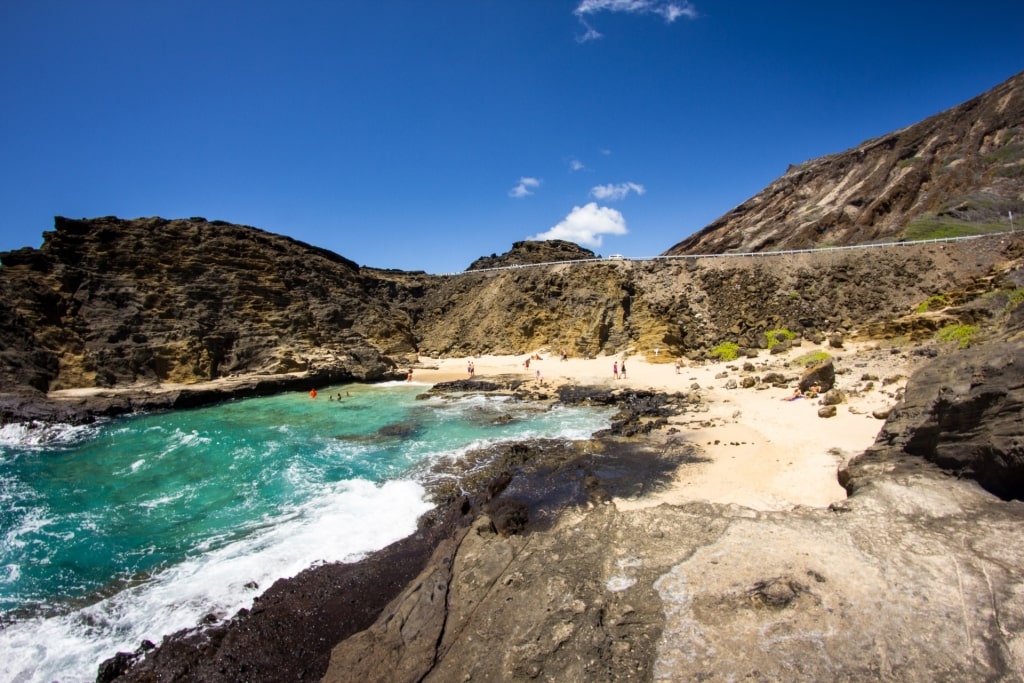
Halona Beach Cove
While travelers looking to see and be seen while soaking a little bit of tropical glamor may want to head elsewhere, Halona Beach Cove is perfect for anyone looking to get away from it all. Locals occasionally refer to this as Oahu’s “Secret” Beach, although these days the word is definitely out.
The cove is so striking that it’s featured prominently in a number of Hollywood classics. It was the site of what was once considered one of the most scandalous cinematic kissing scenes. Burt Lancaster and Deborah Kerr’s seaside makeout earned it the nickname “Eternity Beach.”
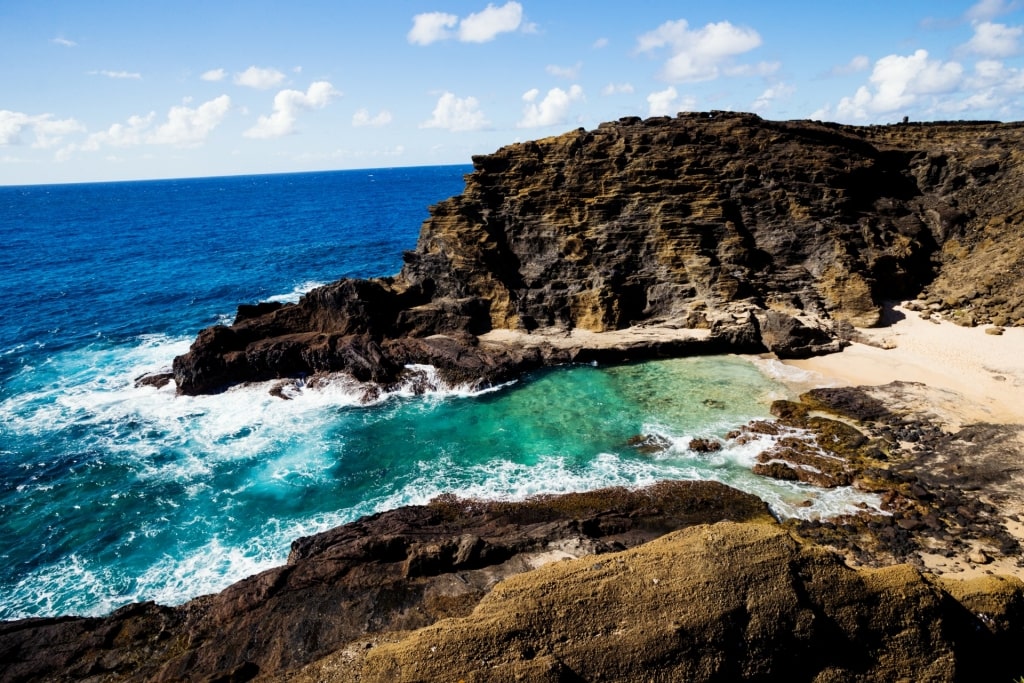
Halona Beach Cove
Still, the fact that it’s shielded from the road by rock formations makes it easy to feel like you’re off in your own little world here. Travelers can stop for a photo opp from the top of the rocks, but it’s worth hiking down to the sandy beach itself. The water here is a particularly arresting shade of turquoise.
As beautiful as Halona Beach Cove is, it’s not the best place for swimming unless you’re very confident. There is no lifeguard on duty and the currents can err on the stronger side as you get farther from shore.
Waikīkī Beach

Waikīkī Beach
This two-mile stretch of sand is by far one of the most famous beaches in all of Hawaii, if not the entire world. It doesn’t hurt that the beach is just a 10-minute cab ride from downtown Honolulu. Kūhiō, Duke’s, and Queen’s Surf Beaches are linked to this sugar-sand strip.
Since the area is highly developed, there is an enormous range of dining and shopping options right near the water. Note that the term Waikīkī Beach is sometimes used to refer to what are technically a series of distinct, interconnected beaches.
Waikīkī Beach owes its far-flung reputation to the critical role it played in the development of contemporary surf culture. Archaeologists have uncovered drawings etched on cave walls of Polynesians surfing as early as the 12th century.

Waikīkī Beach
Surf culture was part of life in Hawaii long before the archipelago was colonized. In the 19th century, under the rule of King Kamehameha, Waikīkī Beach was already a surfing hotspot. Members of the royal families representing different islands would ride the waves here.
In the early 20th century, as more visitors began coming to the islands, interest in surfing spread. Some of the most internationally famous surfers first cut their teeth on these waves. By the 1950s, Waikīkī’s “beach boys” were well-known for helping rookie tourists ride their boards. When off the clock, however, these accomplished athletes were often cleaning up at competitions.
Naturally, Waikīkī Beach looks very different from how it did back in those days. Glitzy high-rises line the edge of the crescent bay. Nevertheless, it remains a terrific place to surf, whether you’re a novice or an experienced vet. The bay is sheltered from strong winds and harsh currents, making this a comparatively forgiving place to learn.
Kūhiō Beach

Kūhiō Beach
Surfers may head to Waikīkī Beach, but families should make a beeline for this connected sandy expanse, one of the best beaches in Honolulu for swimming.
Kūhiō boasts one distinct advantage over its neighboring beaches. A pair of concrete walls stretching into the ocean tame the waves and currents here. As a result, swimming at Kūhiō Beach often feels a bit like being in a massive saltwater pool.

Waikīkī Wall
Since the 1950s, the so-called “Waikīkī Wall” has made this a particularly placid place to splash around. Although you’re likely to see kids jumping off of it, the local lifeguards and authorities strongly caution against this for safety reasons. Still, it’s fun to stroll along the Wall itself in the tropical sunshine.
Given the beach’s central location, all of the desired facilities and conveniences are readily accessible here. From showers to snack stands, everything you need for a day at the beach is within easy walking distance.
Duke’s Beach
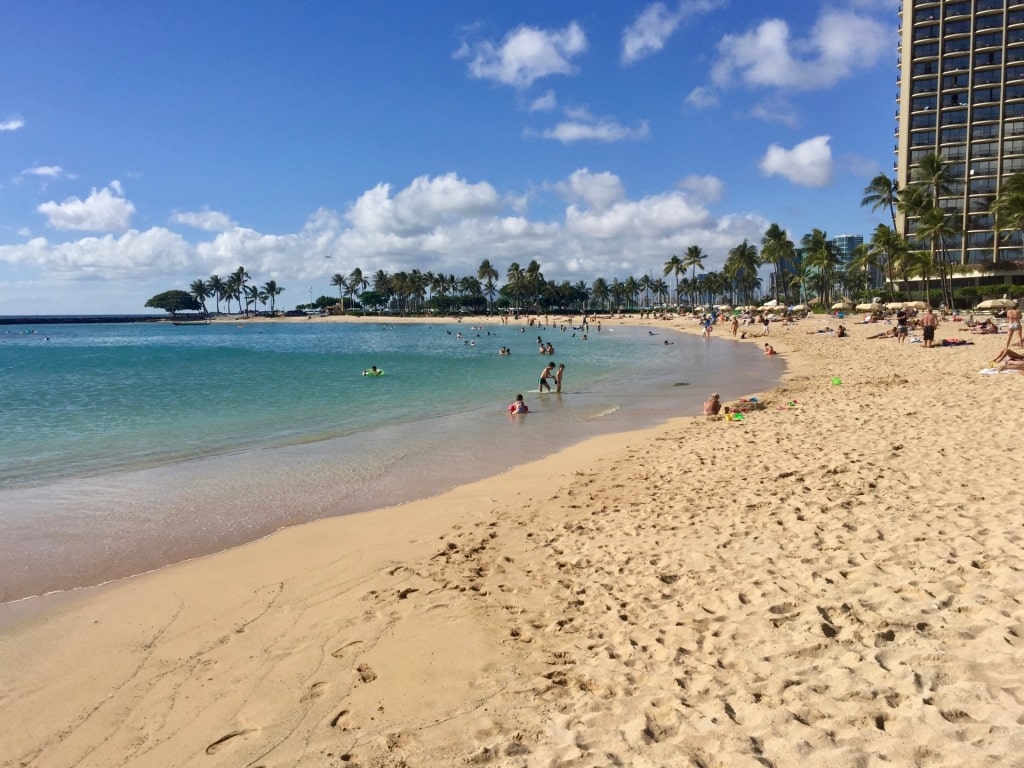
Duke’s Beach
Another beach connected to Waikīkī, Duke’s is named for one of Hawaii’s most legendary surfers. Duke Kahanamoku, sometimes called simply “The Big Kahuna” or “The Duke” here, was born into minor nobility in the Hawaiian Kingdom in 1890. A gifted swimmer from a young age, he quickly earned a spot on the U.S. national team. He scored medals in the 1912, 1920, and 1924 Olympics in Stockholm, Antwerp, and Paris.
Kahanamoku’s surfing prowess only furthered his international fame, while his classically handsome looks landed him several roles in Hollywood films. Hawaiians are proud of Kahanamoku not only for his accomplishments but also for his upstanding character.
In 1925, when a boat sank off of California’s Newport Beach, he rescued eight men using his surfboard. According to eyewitness accounts, the towering waves would easily have sunk a lesser swimmer, but Kahanamoku didn’t hesitate to risk his life to save others.
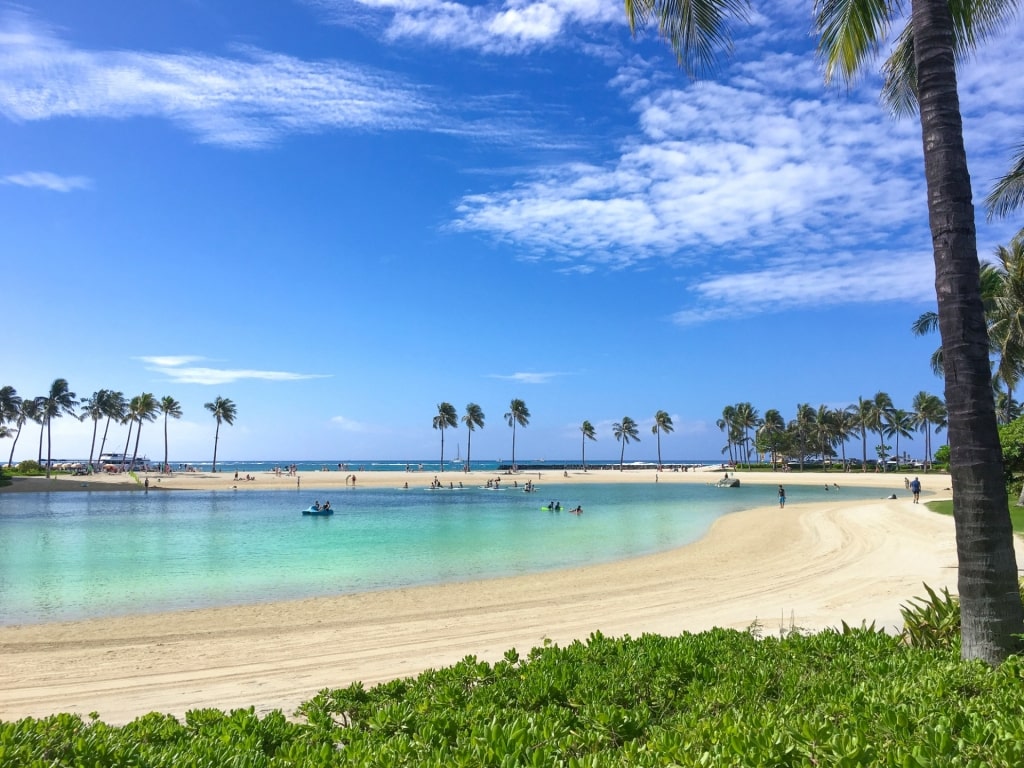
Duke’s Beach
Today, Duke Kahanamoku Beach, or Duke’s Beach, is an homage to his legacy, as well as a perfect spot for an afternoon swim. The sand here is fine and especially broad, while the waves are mild. Lifeguards, restrooms, and assorted eateries are all readily accessible.
Queen’s Surf Beach
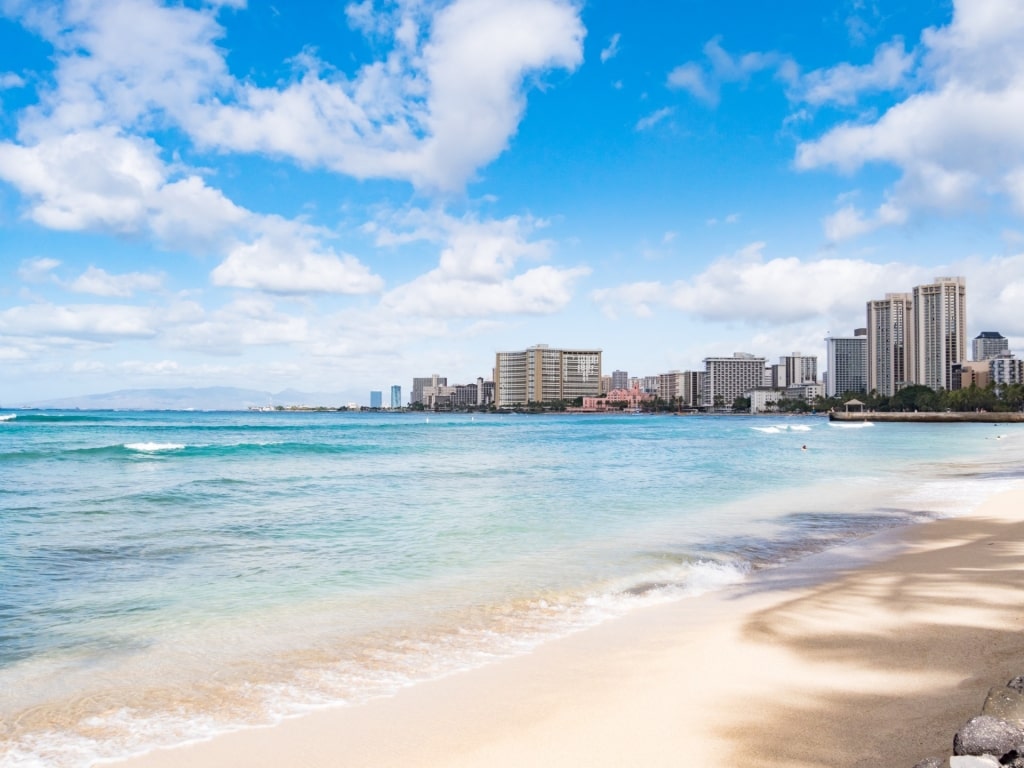
Queen’s Surf Beach
Located a leisurely 15-minute walk from the main stretch of Waikīkī Beach and south of Kūhiō Beach, this spot beckons bodyboarders of all ages and ability levels.
Kids and teens tend to stay near the shallows here, which are very safe. More experienced surfers, on the other hand, test their mettle at the well-known break for which this beach is named.
Lifeguards are on duty to make sure nobody strays too far out to sea. As with the other beaches in Waikīkī’s orbit, travelers can expect well-maintained restrooms.
Queen’s Surf Beach also happens to be a solid spot for snorkeling. The array of tropical fish is hardly on par with, say, Hanauma Bay Nature Preserve, but it is far more convenient for a quick dip. Travelers can pop over to Waikiki Aquarium, one of the best aquariums in the world, then plunge into the ocean for a look at the real deal.
Diamond Head Beach Park
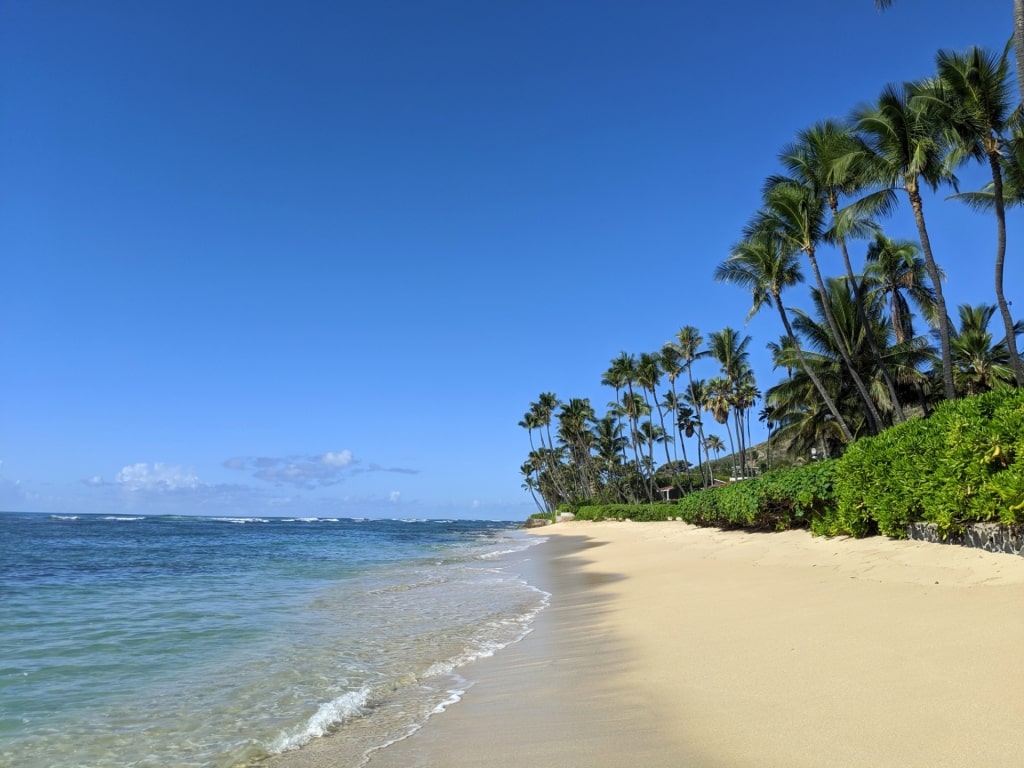
Diamond Head Beach Park
Sometimes referred to as Kuilei Cliffs Beach Park, Diamond Head Beach is only a 15-minute drive from downtown Honolulu, but feels like a different world than Waikīkī Beach. As with much of Hawaii’s geography, the park is the direct result of a volcanic eruption. The park itself rests in the remnants of a crater.
In contrast to the towering hotels and luxury condos that line some of Honolulu’s more glamorous beaches, Diamond Head is fringed by waving palms. A number of rather lavish beach houses are tucked away in the trees, but don’t obstruct the views. Expect to see white-capped waves breaking here against the south side of the island.
Mākālei Beach Park

Mākālei Beach Park
Situated just before Diamond Head Beach Park, Mākālei Beach Park is small and often blissfully free of crowds. The sandy portion of the beach is rather narrow and offshore reef means there is relatively little space for swimming.
For travelers looking to kick back and simply watch the ocean in a low-key setting, the park here may be just right. Pack a picnic lunch and eat it in the shade of a palm tree or at one of the seaside tables. Keep an eye out for surfers in the distance tackling some of the island’s more challenging breaks.
Waiʻalae Beach Park
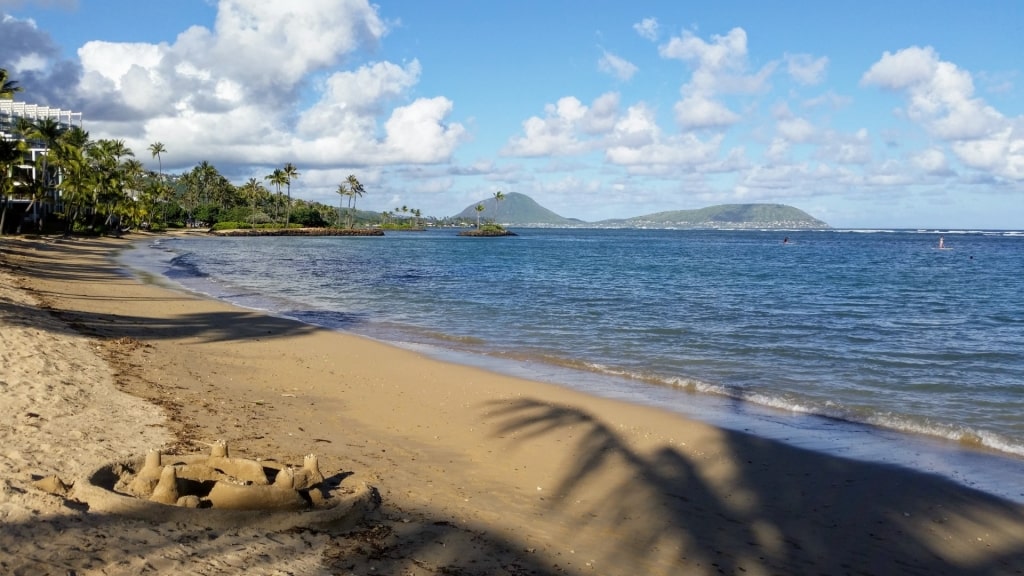
Waiʻalae Beach Park
Just slightly past Diamond Head on the south side of Oahu, this serene, sandy beach makes for an exceedingly pleasant escape. With its gin-clear waters and shallow reef, Waiʻalae Beach is an ideal spot for some no-fuss snorkeling.
What it lacks in facilities, it makes up for with its tranquility relative to more popular beaches. Expect to see a few windsurfers in the distance, plus a picnicker or two. The laid-back vibe here makes this spot more popular with locals.
Ala Moana Beach
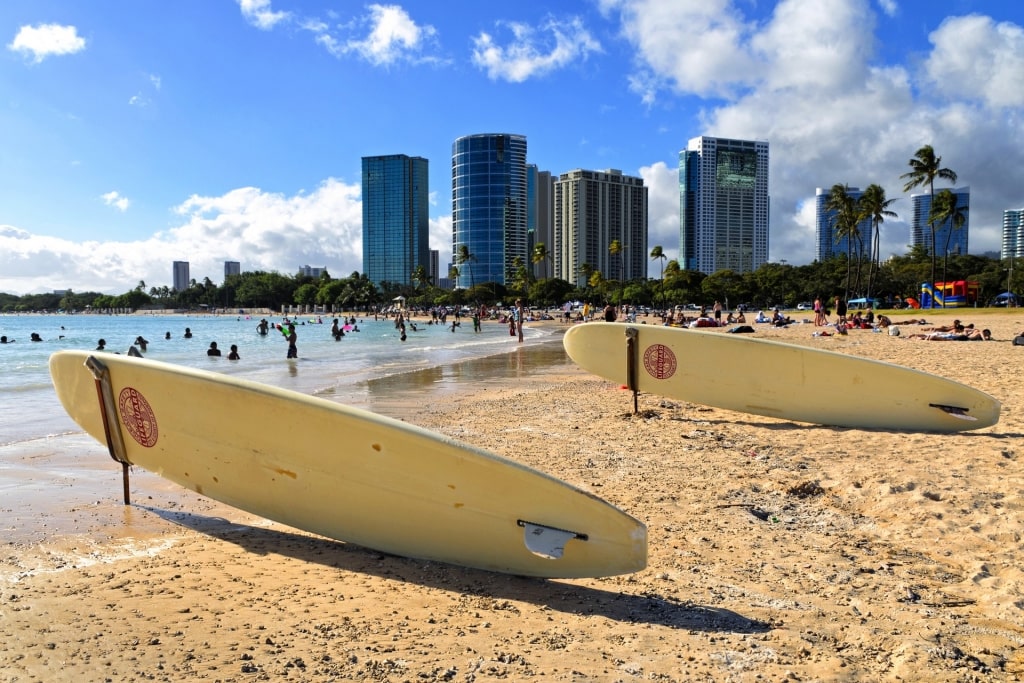
Ala Moana Beach
Although not as globally renowned as Waikīkī Beach, its neighbor to the east, Ala Moana Beach is a fantastic spot right in Honolulu. Picture half a mile of powder-soft sand lapped by cerulean waters.
A natural reef keeps strong currents and dangerous waves at bay here. Meanwhile, Magic Island, an artificial peninsula, acts as a seawall, further ensuring that the waters stay safe for less confident swimmers.
The beach has the requisite showers and restrooms, plus watchful lifeguards. There are even barbecue grills, meaning you can expect to see families flipping burgers on weekends. Travelers can easily pull together an impromptu cookout or get food from the nearby snack stand.
Kapiʻolani Regional Park Beach

Kapiʻolani Regional Park Beach
The history of this park stretches back to 1877, when King Kalakaua decreed that 300 acres of land should be Hawaii’s first public park.
He named the place in honor of his wife, Queen Kapiʻolani. Today, Kapiʻolani Regional Park is a bustling destination perfect for the whole family. The park beach boasts warm, shallow waters and fine sands.
Before or after hitting the beach, travelers with children in tow may want to check out the nearby Honolulu Zoo. The zoo is by far the largest in Hawaii and one of the top attractions on Oahu. It’s especially noteworthy for its educational programs for all ages.
Although there are animals from all different continents here, including orangutans and Komodo dragons, this is a great place to learn about Hawaii’s unique ecosystem. The zoo also has its own nonprofit, the Aloha ʻĀina Conservation Fund, dedicated to preserving Hawaiian wildlife.
Read: Why a Cruise Is the Best Way to See Hawaii
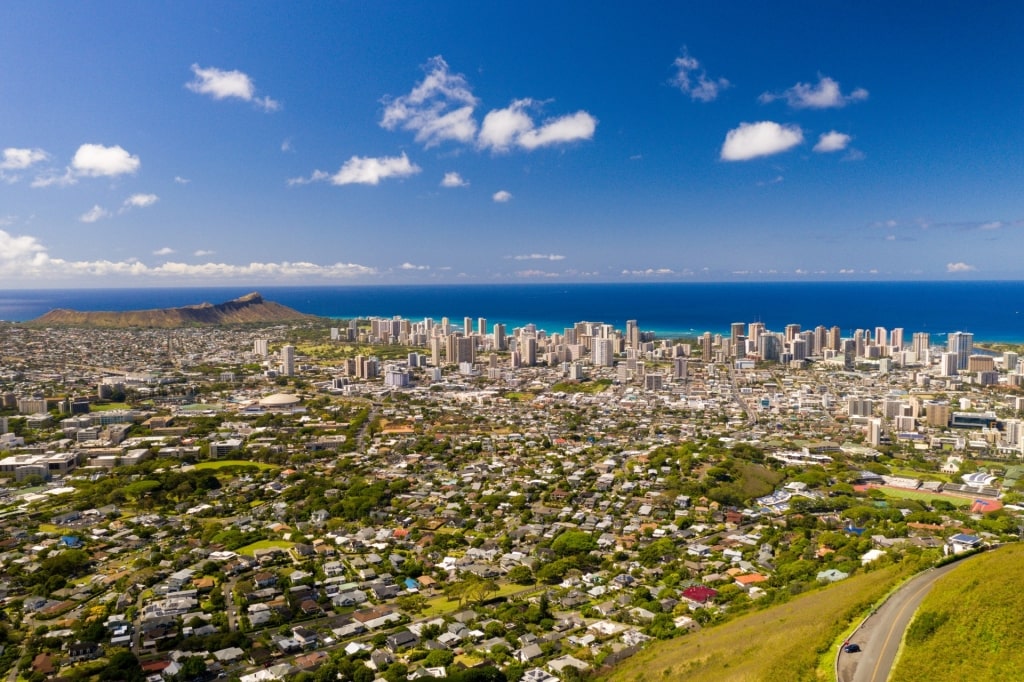
Honolulu
The best way to experience all of Honolulu’s beautiful beaches is from the comfort of a Celebrity Cruises ship. Browse our cruises to Honolulu and book your next voyage today.



